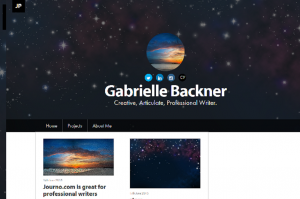Professional writing is a vast, ever-expanding field, and certain aspects of it remain constant in any field of work. A professional writer must always have:
- good communication skills
- good technical skills
- good organizational skills
And most importantly:
- good writing skills (duh)
All professional writers need these skills, but not all professional writing jobs and careers are exactly the same. There are numerous job opportunities and career goals for professional writers, in various fields of work and almost anywhere in the world.
But where to start?
It’s understandable to be a little overwhelmed, but luckily Chatham University’s Masters of Professional Writing online program is incredibly flexible, allowing you to choose a concentration, or do a little of everything and see what appeals to you. Here’s a brief glimpse at the different types of professional writing you’ll hear about during this program and the various careers they offer, which will help you narrow down (or maybe broaden!) your course of study and future academic plans:
Technical Writing
Technical writing takes complex, intricate material and makes it presentable and accessible to different audiences. There’s an ever-expanding field for writers who can cut through all the technical verbiage and make the information easy-to-follow and resonate with a non-technical audience. Types of technical writing include:
- Letter Reports
- Technical Reports
- Copy Editing
- How-to Guides and Technical Manuals
Web Content
This aspect of professional writing centers on developing web content, such as designing websites and writing content for websites. It uses skills in web design and media software, and uses authoring tools and various multimedia techniques to convey information in a practical, available manner. Types of web content writing include:
- Designing websites
- Managing websites
- Designing/managing social media pages
- Designing/managing wikis and blogs
Nonprofit Professional Writing
Writing for a nonprofit organization is an extensive communications profession that requires creating persuasive content in a variety of settings. Your writing has to convince the reader to give you their money. Types of nonprofit writing include:
- Public Relations Coordinating
- Grant Writing
- Fund Raising
- Development Coordinating
Communication Professional Writing
Communications writing involves fusing critical thinking, creative expression and data strategy. It involves clear, concise writing and often is targeted at a particular audience or focus group. Types of communication writing include:
- Public relations
- Marketing
- Advertising
- Corporate Writing
This quick look into the various types of professional writing will give you a better understanding of the Masters of Professional Writing programs’ numerous courses of study. As mentioned, the field of professional writing is always growing and expanding, and therefore the career options and job opportunities will continue to expand and grow as well. These different concentrations of professional writing demonstrate just how many different jobs and careers this program opens you up to, and each of these concentrations has a curriculum in this program. If you would like more information on these curriculums, go to Chatham’s Masters of Professional Writing website: www.chatham.edu/ccps/mpw/index.cfm#reqs
Good luck, future professional writers!




 ands that is. Time stealers like housework and everyday errands will leave you frustrated and exhausted and sitting down to start homework at 9 pm is not the way to approach this investment. Take that shinny new chatham.edu for a spin at Amazon Prime for Students! Free 6 month trial and only $50 after for a year membership. Receive free 2 day shipping on practically anything you would buy at Target. You might even save money without having the browsing temptation. Free 2 day shipping and return shipping even on rental text books. Click, add to cart, get it delivered, and done.
ands that is. Time stealers like housework and everyday errands will leave you frustrated and exhausted and sitting down to start homework at 9 pm is not the way to approach this investment. Take that shinny new chatham.edu for a spin at Amazon Prime for Students! Free 6 month trial and only $50 after for a year membership. Receive free 2 day shipping on practically anything you would buy at Target. You might even save money without having the browsing temptation. Free 2 day shipping and return shipping even on rental text books. Click, add to cart, get it delivered, and done.








